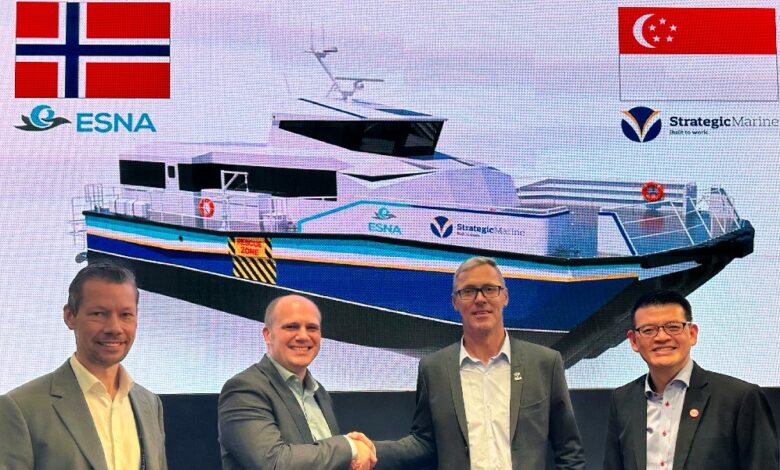ESNA, Strategic Marine developing surface effect CTV for offshore wind market

Norwegian ship design company ESNA and Singapore-based shipbuilder Strategic Marine have signed an agreement to develop a surface effect ship crew transfer vessel (SES CTV) for offshore wind applications.
The agreement is based on the two working together on three SES crew boats for oil and gas, set for completion this year. This new deal also aims to promotes SES technology in other markets, such as offshore wind, oil and gas, and security and defence applications.
The two companies agreed to start building the first offshore wind farm SES CTV during the fourth quarter of 2024.
Strategic Maritime has so far built 36 offshore wind CTVs since 2012. ESNA, on the other hand, has worked for more than 40 years with the design, building, construction, and operation of SES.
The SES concept for CTVs enables higher speed, a shorter transit time, fuel saving, reduced emissions, and more time for work. The active SES motion damping system provides better seakeeping and higher passenger comfort than what is possible with conventional monohulls and catamarans. It is also used at the wind turbines to allow turbine transfers in higher wave heights.
ESNA will be supplying the vessel design and equipment package for the main SES systems. The SES equipment package enables simpler construction by fully replacing hydraulic systems with modular electrical systems.
